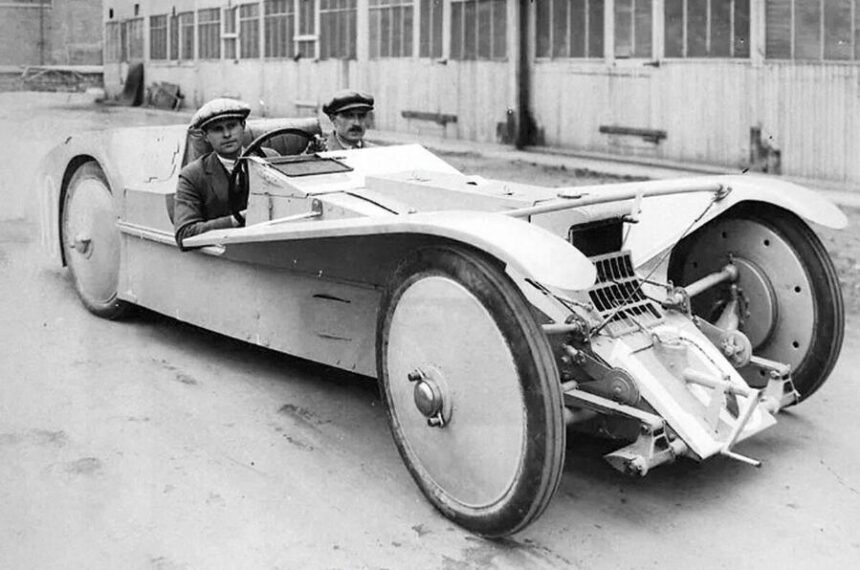Voisin cars were truly ahead of their time, breaking design norms and engineering conventions with their unique creations. One such example is the Avions Voisin Type C6 Laboratoire, introduced in the French Grand Prix of 1923 alongside Bugatti’s Type 32 ‘Tank’. This car, designed by aeronautical engineer Gabriel Voisin, looked like something out of a sci-fi film or steampunk fantasy.
The C6 Laboratoire had a profile resembling an airplane wing, with a flat undersurface and a cambered upper surface. It featured a monocoque construction, a concept that wouldn’t become common for decades. The car weighed just 660kg, significantly lighter than its competition. The front of the car sported spinning blades that powered the cooling system, adding to its unique design.
Unfortunately, the C6 Laboratoire faced setbacks during its debut race, with only one of the four cars lasting the full distance. Despite this, Voisin continued to innovate with their road cars, such as the sporty 4.0-litre C5. This model impressed Autocar with its sturdiness, power, and handling capabilities.
In the 1930s, Voisin embraced the art-deco style with models like the C25 Aérodyne, C20 Mylord, and C27 Aérosport, catering to the ultra-wealthy with their luxurious and stylish designs. Gabriel Voisin also had ambitious ideas for the future, including a straight 12 engine and a streamlined car with unique steering configurations.
After World War II, Voisin was nationalized and never produced another car. However, their finest creations are now highly sought after, fetching millions at prestigious concours d’elegance events.
Overall, Voisin cars were true pioneers in automotive design, pushing boundaries and creating timeless classics that continue to captivate enthusiasts today.







